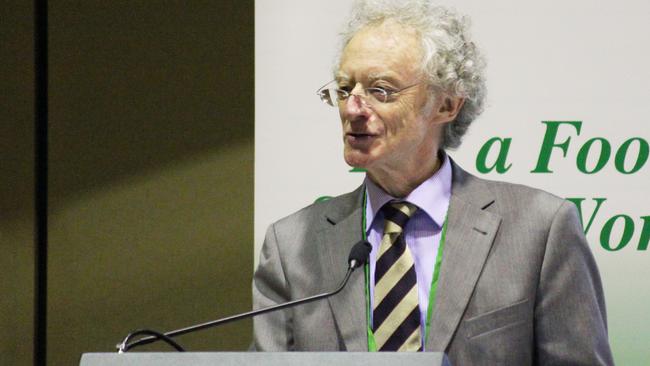Gas peaking plants, carbon capture and big spending on renewables needed, says report
Australia faces an uphill battle to get its decarbonisation efforts on track by 2030, says a Net Zero Australia report.

Australia must find $1.5 trillion by the end of the decade to meet 2050 green targets in an effort experts say would need to mirror the reconstruction of Europe after World War II.
The expert group, Net Zero Australia, found Australia should not simply abandon fossil fuels in an effort to cut carbon emissions. Its modelling concludes that a new fleet of gas peaking power stations would still be needed on the east coast to smooth the transition to renewable energy, and ensure the nation’s remaining coal-fired power plants exit the grid on time and in an orderly fashion.
The group will release its final report on Wednesday, focusing on the steps needed to make sure the country is on track by 2030 to achieve net zero emissions by the global target date of 2050.
Top business leaders have already warned Labor’s pledge to treble the amount of renewable energy in the grid by 2030 is at risk as the nation is failing to build enough green power.
The report says that nearly 50 gigawatts of planned and committed renewable energy generation falls well short of the 230GW estimated to be needed by 2035, and that a drastic acceleration of both onshore and offshore wind developments would be needed to provide future power.
The largest economic transformation in Australian history is among the final conclusions of the major expert study of Australia’s path to net zero carbon emissions, conducted by interdisciplinary teams from the University of Melbourne, The University of Queensland, Princeton University’s Andlinger Centre for Energy and Environment, and Nous Group.
Robin Batterham – emeritus professor of engineering at the University of Melbourne and Australia’s former chief scientist – who chaired the group’s steering committee, said it was a huge task.
“We’re coming to a position that’s fairly clear and says that, at this stage, all material options should be accelerated,” he said.
“And that means you don’t take anything off the table now. You don’t close coal down if you haven’t got the reliable supply there ready to take over when you turn it off.”

The economic push would be enormous, even among the working population. Net Zero Australia’s modelling suggests the skilled workforce needed to install and run new generation assets, transmission lines, and associated decarbonisation efforts will need to double to at least 200,000 people by 2030 and reach 700,000-850,000 by 2060 – up to 4 per cent of Australia’s estimated total workforce.
The report finds that Australia will need to both speed up and broaden its decarbonisation efforts to reach net zero emissions by 2050, including a whole-of-economy approach that includes more options, stronger investment drivers and a far larger pipeline of renewable energy and other transition projects.
“Narrowing options too early would prevent the most cost-effective options being deployed,” the report says.
“The history of solar power shows how expectations of cost and scale can change greatly as technology and production innovation proceeds.
“At this early stage of the transition all options that have the potential to make a material contribution to achieving net zero should be progressed, so that their potential contribution remains viable. How and when this should be done is a judgment to be made for each option, taking into account its maturity, risk, and potential scale and cost.”
The large-scale solar in the National Electricity Market pipeline falls short of the best-case scenarios, and onshore wind falls short of all scenarios,” the report says.
“Our modelling shows that offshore wind is an important future source, particularly if onshore renewables are constrained (by social licence issues). To preserve this option requires an offshore wind industry to be established as soon as possible, particularly in the Bass Strait. First power from offshore wind should be targeted for 2030.”
Nous Group principal Richard Bolt said the work previously conducted by the group, which released its final modelling in April, showed Australia badly needed to accelerate its investment in the transition including in technology unpopular with green activists, such as gas peaking plants, and carbon capture and storage.
“We need to get ready to build a large fleet of gas-fired peaking plants beginning 2030, to back up renewables and exit coal-fired power – but with minimal actual use of gas. Carbon capture utilisation and storage (CCUS) basins need to be prepared for large-scale, commercial use by 2030, as do initial clean hydrogen infrastructure projects,” he said.
Renewable energy generation would need to grow to about 40 times the current NEM generation capacity, according to previous modelling by the group – but, even under the most aggressive renewable energy scenario modelled by Net Zero Australia, the country’s total domestic energy costs would fall from just under 9 per cent of GDP to about 7 per cent by 2050.
Such is the level of investment required to build out new-generation storage facilities such as batteries and pumped-hydro, and transmissions lines, that up to $1.5 trillion will need to be deployed by 2030 to put Australia on track to meet its 2050 commitments, according to study co-author Chris Greig, a senior research scientist at Princeton University in the US.
“The modelled capital requirement – $1.2 trillion to $1.5 trillion of commitments by 2030, and $7 trillion to $9 trillion by 2060) will not be met at the current rate; the gap is enormous,” he said.
The report says that level of spending would make the energy transition one of the biggest and fastest economic transformations in global history. It would be an effort which would be in line with the US-led Marshall Plan to rebuild Europe after World War II, Professor Batterham said.
“It would seem that if you just leave it to little initiatives here and there, they might get you there, and they might not. It’s one thing to wave our arms and say we need a moonshot, we need a Marshall Plan, or what have you – I don’t resile from that,” he said.
Professor Batterham said the key to meeting Australia’s targets and commitments was not just accelerating progress on current plans, but keeping the options open – because technology and costs would change.
But waiting for “silver-bullet” technology – like small modular nuclear reactors, which is being backed heavily by Opposition Leader Peter Dutton – that is not yet ready for commercial deployment, would be a serious mistake, he said.
“Probably a lot of people don’t appreciate the argument that we’ve used which says, don’t wait for the silver bullet, get on and use what you can now, because that’s what’s needed to accelerate the process,” he said.
“Leave every option on the table now and get on with it – and don’t rely on stuff that isn’t there yet. Nuclear might get there, but it ain’t there yet.”








To join the conversation, please log in. Don't have an account? Register
Join the conversation, you are commenting as Logout